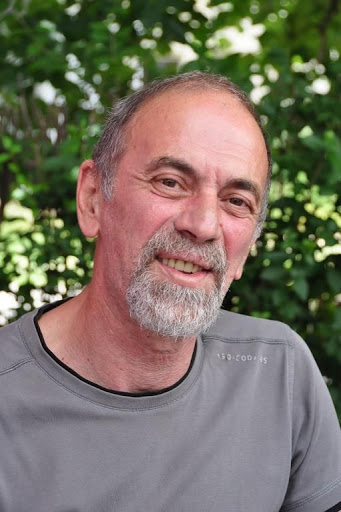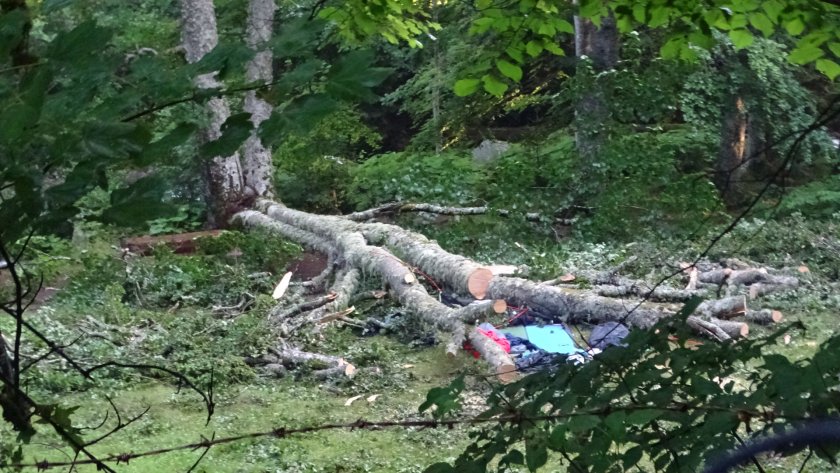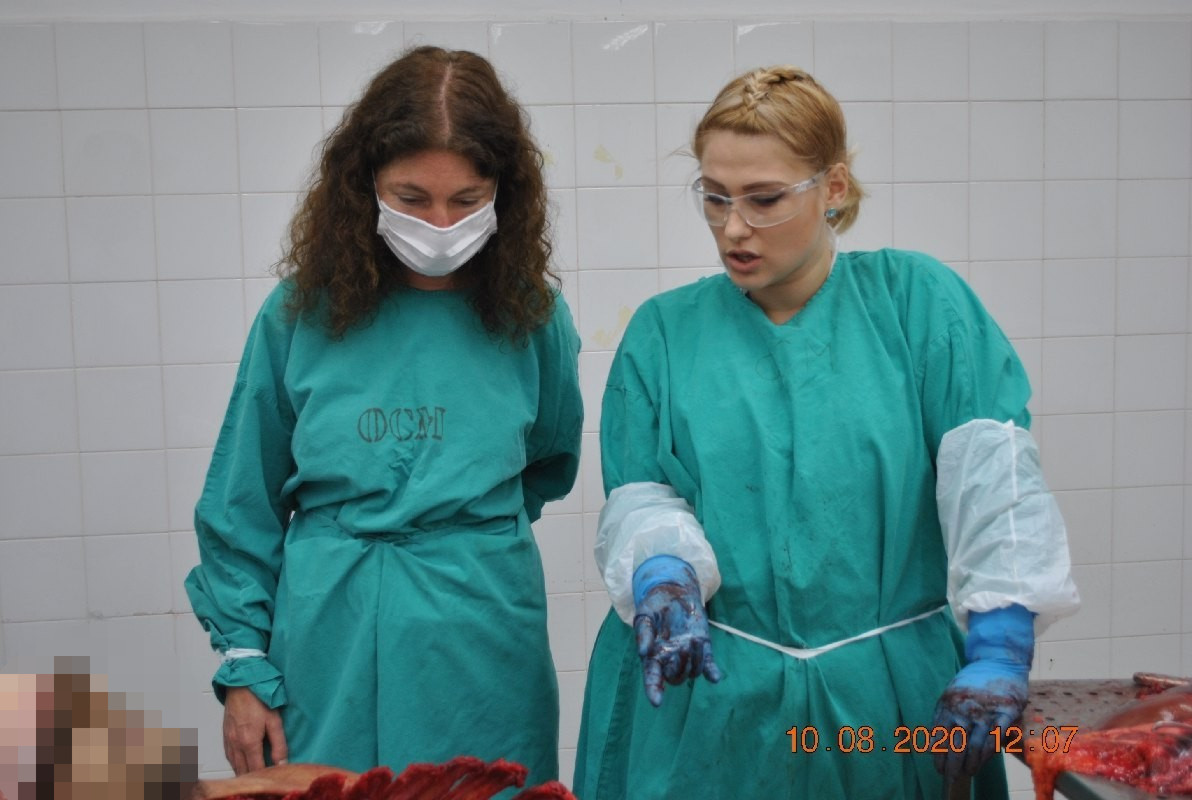You hit a raw nerve in me with this question.
There are many leads I want to follow and this is a very interesting one. I even bought this book back in the days.
Otze is a celebrity:
National Geographic, here you can find
more details. My interest was in the way he was found. As you can see from the cover above the mummy was frozen year- around only waist down, and his upper body was thawing and freezing for 5000+ years.
I was searching the internet for "Repeated Freeze-thaw Cycles on cadaver symptoms". Found this links:
https://www.ncbi.nlm.nih.gov/pubmed/?term=Teresi%C5%84ski%20G%5BAuthor%5D&cauthor=true&cauthor_uid=24557588https://vdocuments.mx/european-council-of-legal-medicine.htmlEven meant to write to Dr hab. n. med. Grzegorz Teresinski but never came around to do it.
Grzegorz Teresiński
Department of Forensic Medicine
Medical University of Lublin
ul. Jaczewskiego 8
PL-20-090 Lublin
[email protected]In my notes is also
The pathophysiological mechanisms of the onset of death through accidental hypothermia and the presentation of "The little match girl" caseBack on the Dyatlov group case. Solter washed six bodies. I thought to single out the three that remained dirty might prove easier. So who wasn't brought to Ivdel morgue before the official discovery of the bodies? These were only my initial thoughts and counterpoints:
Doroshenko* Around the nasal ridge, the nasal tip and the upper lip, there are clotted blood traces. Around the right cheek, the soft tissue is covered with a layer of foamy grey fluid. Grey fluid traces are also visible around the opening of the mouth. But if he wasn't moved, why was he found sprawled like that?
Dyatlov The lips are of bluish purple color and covered in clotted blood. Dyatlov is the only one whose cadaveric spots match the position in which he was found (on the back). All others do not match.
Slobodin There is a trail of caked blood coming from the opening of the nose + the icy bed under the body. This observation and conclusion was mentioned in
Akselrod's testimony, but he hasn't seen the rest of the bodies when they were found, so if Akselrod was the only one registering the fact, then the rest just might as well have icy beds that nobody testified about. At least we have one dying spot that looks like hasn't been doctored... unless his clothes were wet. His body could have been in the river.
Zolotaryov soiled himself (signs of defecation from the rectum). They could have washed him somewhat and then put back the soiled clothes, and this is how he got dirty again.
* I consulted Ivan Stoyanov M.D. Expert Forensic Medicine

Dr. Stoyanov told me that if a body is unidentified or the relatives can come right away it goes in a special chambers.
Recently a foreigner died, the family was contacted and made travel arrangements. The bodies was taken out of the freezer. But the flight was canceled (Covid times) so the body went into the freezer again. When they finally got it out for transportation some liquid came out of his nostrils - grey and foamy. So the fact that Doroshenko's right cheek was covered with foamy grey fluid is not conclusive that he couldn't been washed.
I started entering notes from forensic sources pertinent to the Dyatlov group case long time ago when I started the site.
https://dyatlovpass.com/forensicThe reason to start it were symptoms for hypothermia. Some sources say that signs of death from hypothermia are light colored blood (excess oxygen) and the presence of blood clots, since death from hypothermia is relatively slow. In Dyatlov's group, the blood at autopsies is dark. The absence of blood clots is interpreted by some researchers as fast, i.e. criminal.
But according to
Blossfeld-Diberg-Raisky, blood can be dark in death caused by hypothermia and blood clots can break up during thawing i.e. the absence of blood clots and the color of the blood cannot be indicators of whether death occurred as a result of hypothermia.
I discussed the problem with M.D. Vasil Nikolchev, Head of the Forensic Department in Kyustendil, Bulgaria. He made the autopsy of the woman who was killed by a tree that fell on top of her tent on 7/7/2020.

Woman (29) dead, boyfriend walked away with a minor injury and a fright
Dr. Nikolchev agreed that the common perception is for light colored blood to be found in frozen corpses, but the blood can be dark, too. And the blood clots may dissolve during thawing. Then he handed me the following scientific paper and said "We all (the MD) keep looking for answers in books till the last day of our practice."
https://dyatlovpass.com/resources/340/Hypothermia.pdfOn p. 10 it says how many autopsies are taken in consideration - 3265. Many parameters are taken into account - age, gender, life style, health, latitude, climate, alcohol, genetics, I can even remember all you are welcome to leaf through t, sorry that it is in Bulgarian but I ma sure you can find a way to translate it if it comes to that. On page 28 there is a table that shows what are the % for bright/scarlet blood - 49%. Right in the middle.
I asked Dr. Nikolchev for his opinion on refreezing the bodies:
All kinds of things can happen when a body is thawed - change of color, rapid decomposition and all kinds of fluids can start coming out. He wasn't sure about defecation. Dr. Nikolchev said that in his 29 year practice he had only seen hanged people soil themselves, but not all of them do it. Common knowledge is that people dying from hypothermia have more urine in their bladder. They just do not urinate. There is no explanation about that, they just don't. But it is not a rule. The MD was kind of upset because he saw that I am expecting more certainty in his answers. He said that every illness, every condition, everything concerning the body can develop atypically. The coroner merely records an observation. Certain things are more of a symptom for further exploration e.g. discoloration means poisoning - make a test for certain poison.
Foam coming from the mouth and nose can happen when the heart stops, too. It is not indicative of a certain cause of death.

Me and M.D. Marina Miteva
Dr. Nikolchev's opinion on the three fractures on Zolotaryov's scapula - he totally agrees with M.D. Marina Miteva, who during an autopsy of a man who fell from the 5th floor explained to me, that if you won't open the body from the back you won't see the fractured scapula. They rarely cut bodies from the back, only when they have a probable cause to expect to find something. In the case of the woman that Dr. Nikolchev autopsied - he didn't cut her from the back. If she had a fractured scapula he wouldn't see it in the autopsy. Nowadays they have diagnostic imaging. The body I was observing being autopsied in Ruse had fallen from the 5th floor. A lot of damage was expected so in this case the body goes through a CT (Computed tomography) scan first so the medical examiner knows in advance what to look for. Marina cut the body from the front and the back. More important is that Dr. Nikolchev said that if a tree had caused the rest of the damage on Zolotaryov, the three fractures on the scapula are consistent with this trauma.
In conclusion, it will be greatly appreciated if you can bring something to the table (pun intended).
https://dyatlovpass.com/forensic